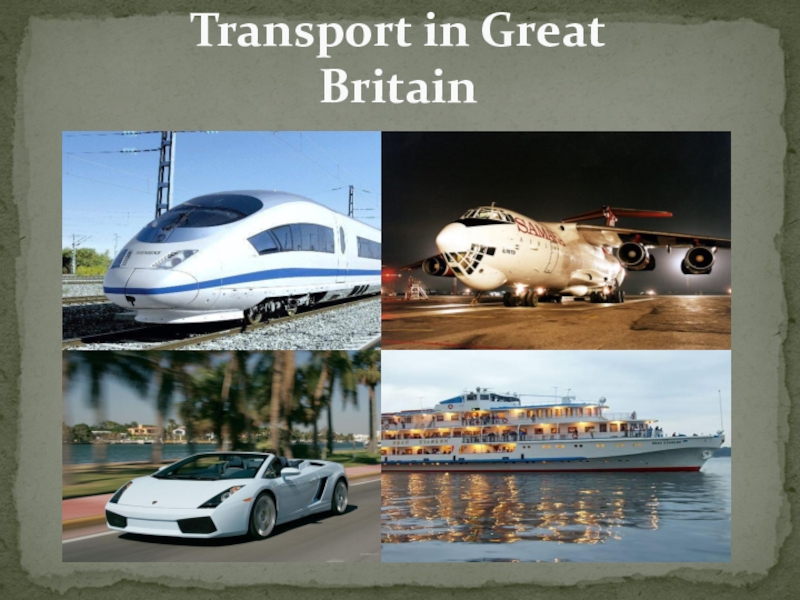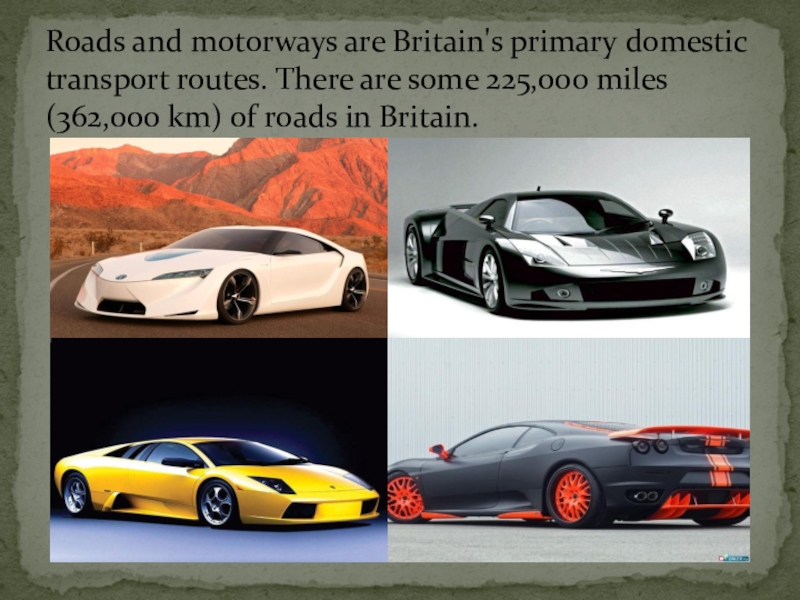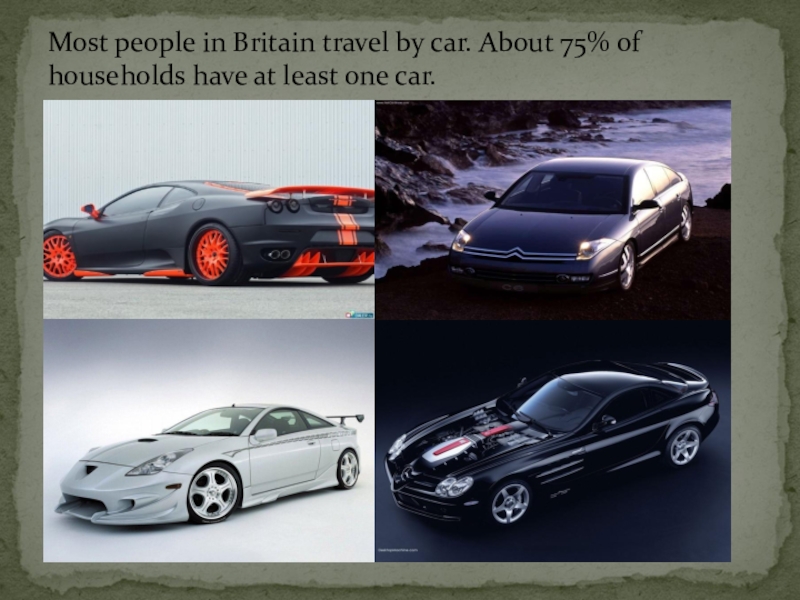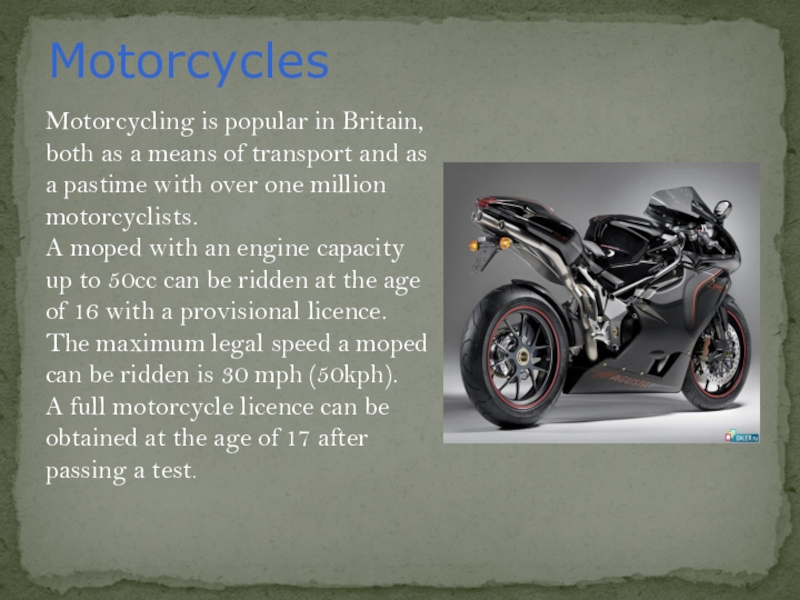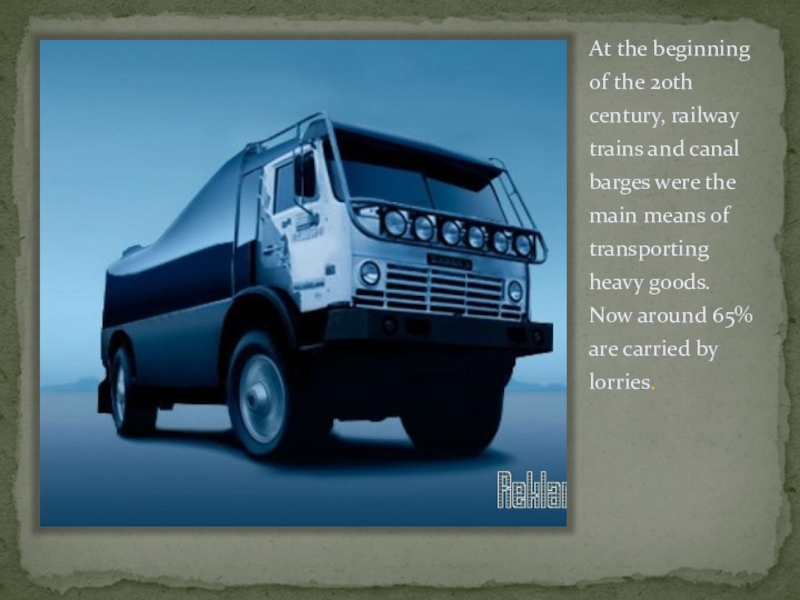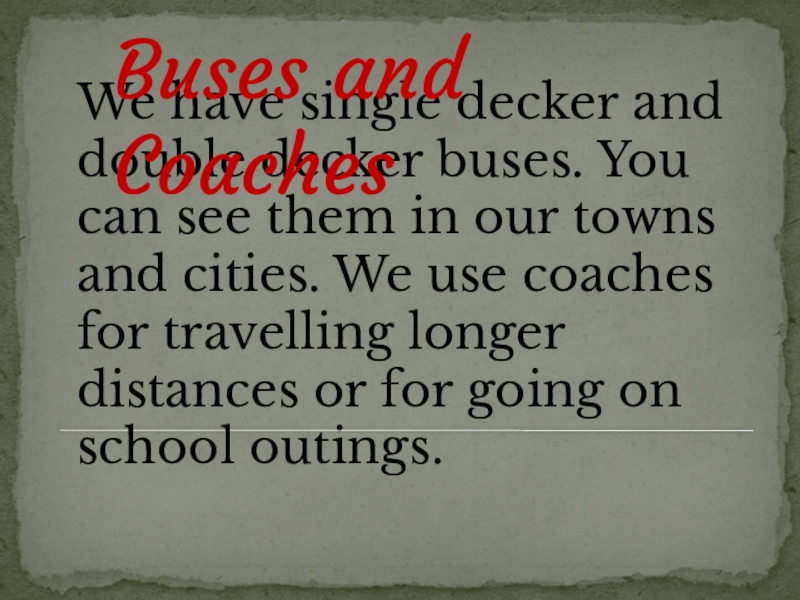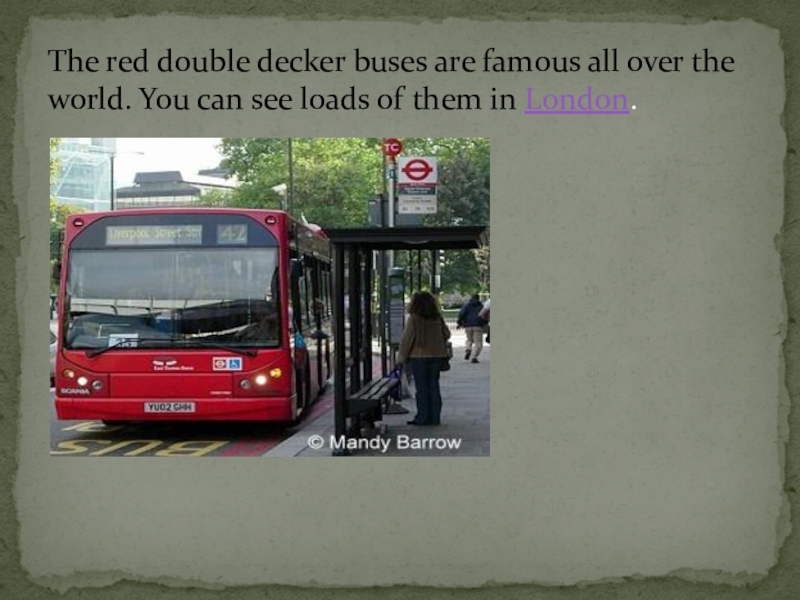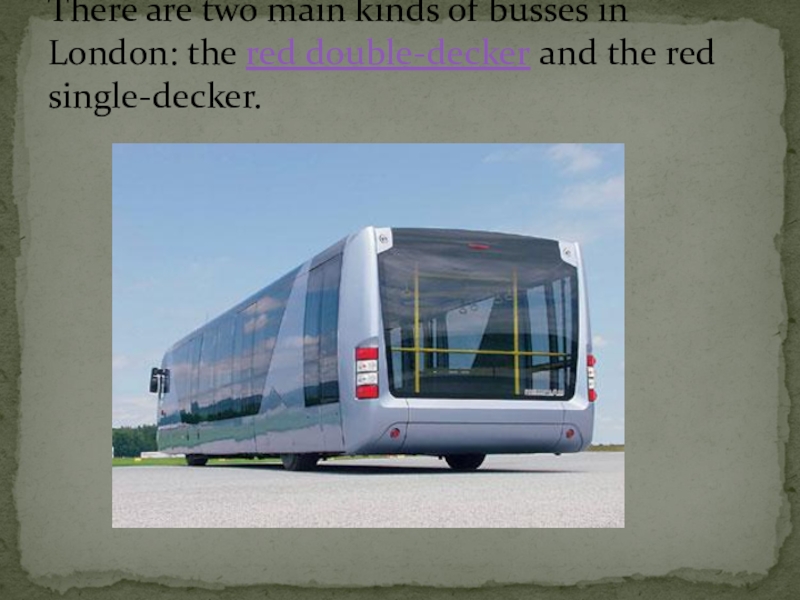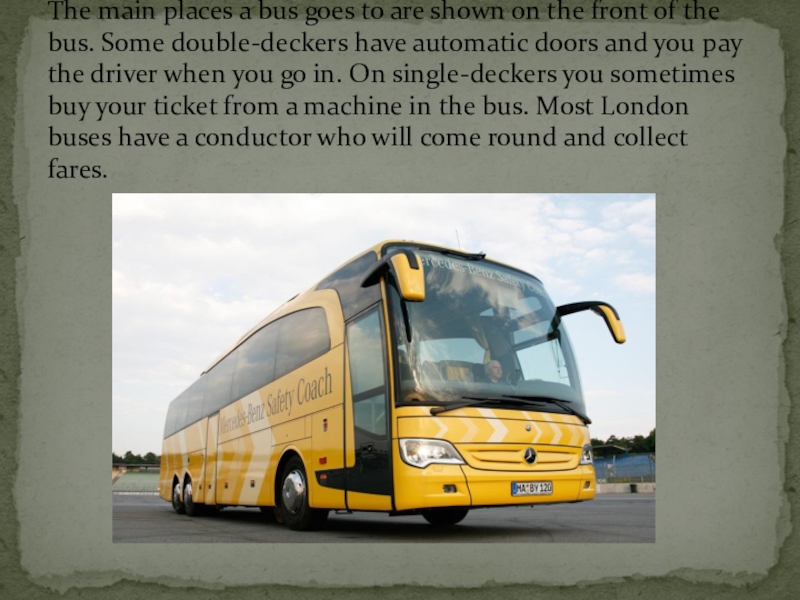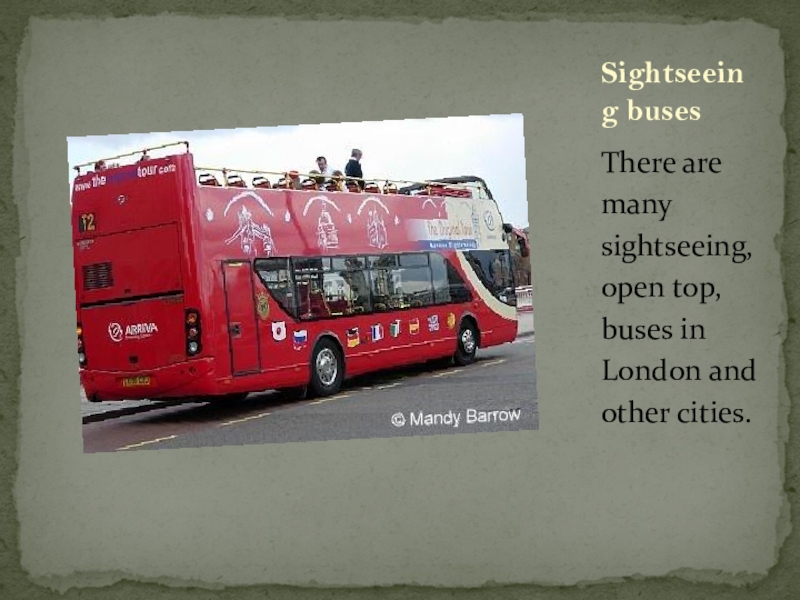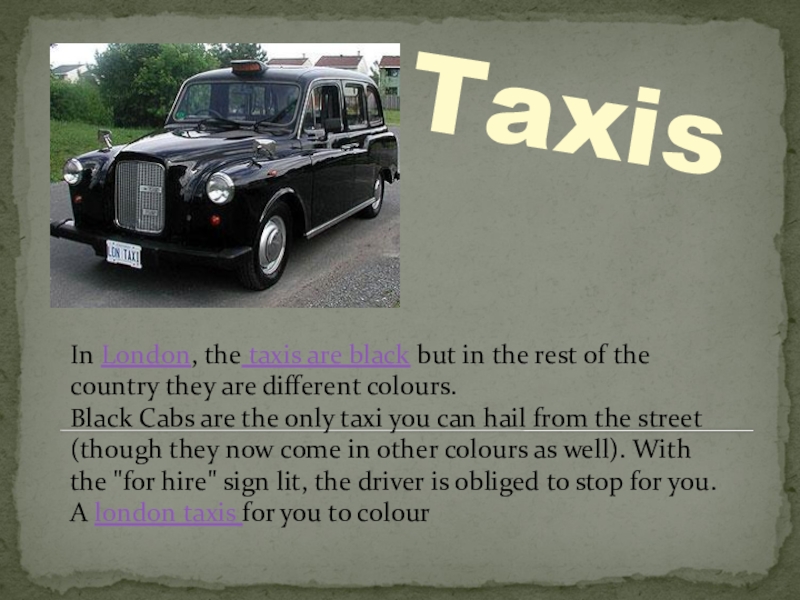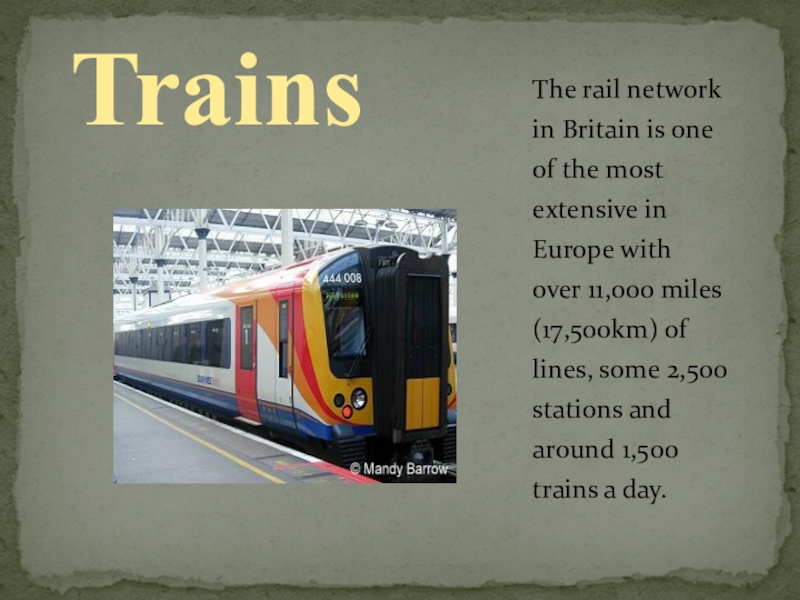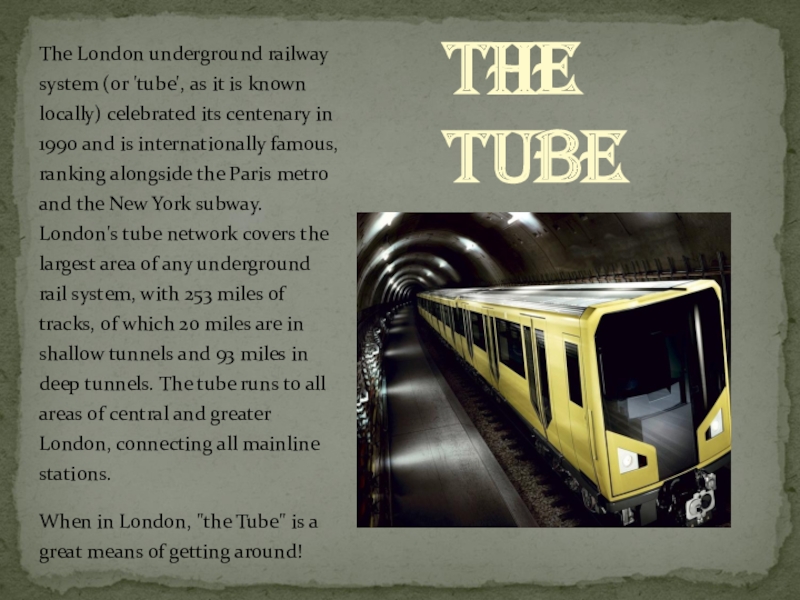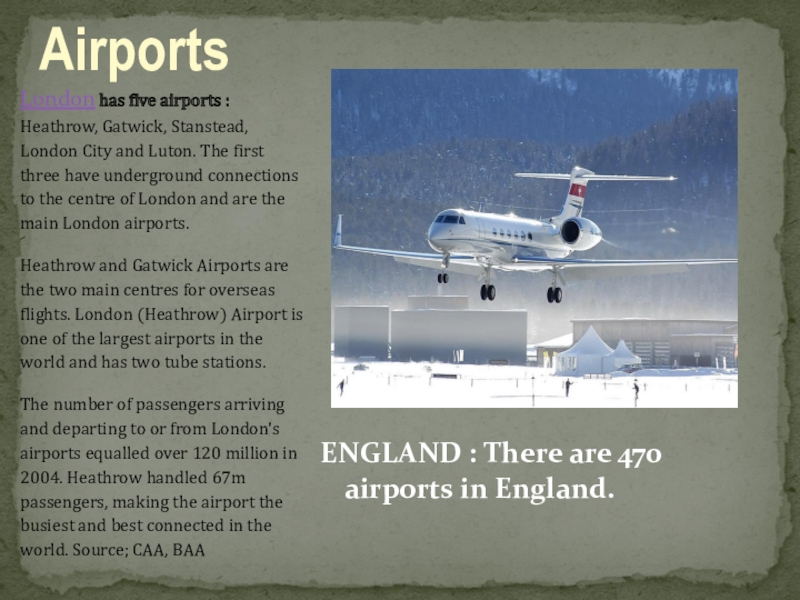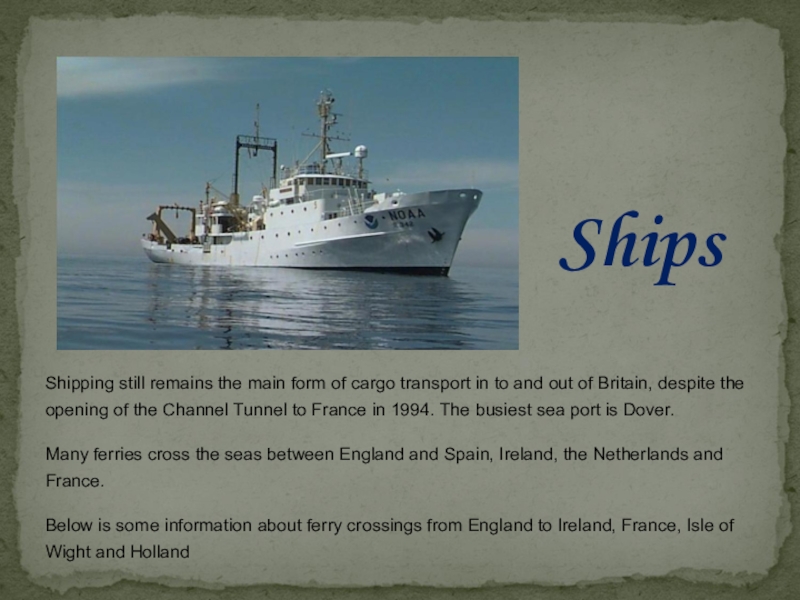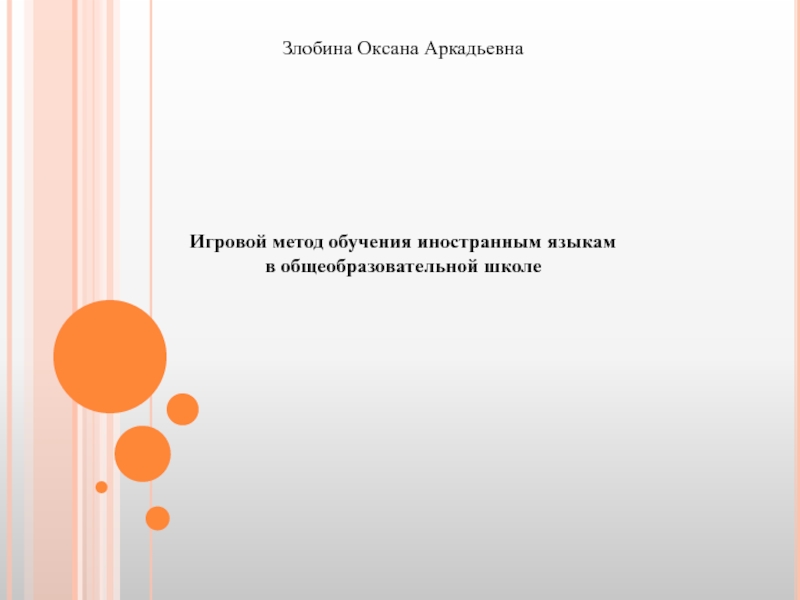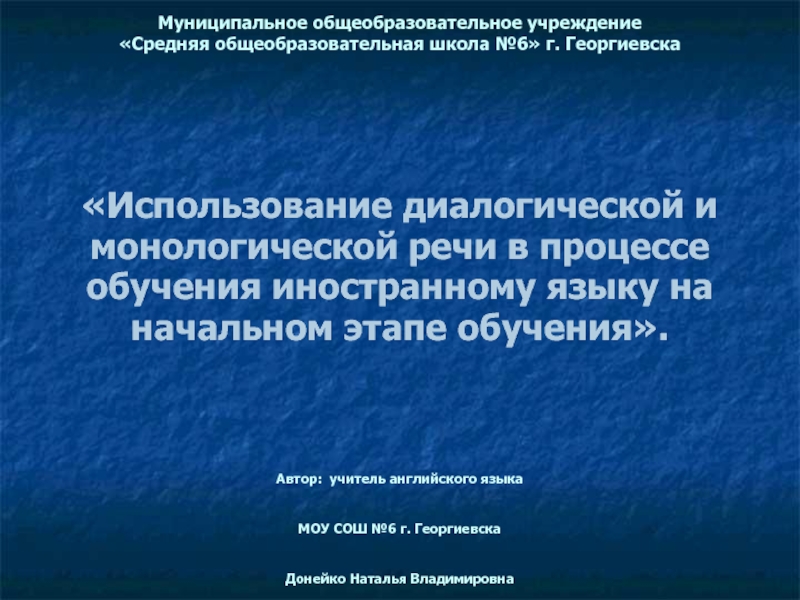- Главная
- Разное
- Образование
- Спорт
- Естествознание
- Природоведение
- Религиоведение
- Французский язык
- Черчение
- Английский язык
- Астрономия
- Алгебра
- Биология
- География
- Геометрия
- Детские презентации
- Информатика
- История
- Литература
- Математика
- Музыка
- МХК
- Немецкий язык
- ОБЖ
- Обществознание
- Окружающий мир
- Педагогика
- Русский язык
- Технология
- Физика
- Философия
- Химия
- Шаблоны, фоны, картинки для презентаций
- Экология
- Экономика
Презентация, доклад по иностранному языку для студентов 2 курса СПО на тему: Transport in Great Britain
Содержание
- 1. Презентация по иностранному языку для студентов 2 курса СПО на тему: Transport in Great Britain
- 2. Roads and motorways are Britain's primary domestic
- 3. Most people in Britain travel by car.
- 4. Motorcycles Motorcycling is popular in Britain, both
- 5. At the beginning of the 20th century,
- 6. We have single decker and double decker
- 7. The red double decker buses are famous
- 8. There are two main kinds of busses in London: the red double-decker and the red single-decker.
- 9. The main places a bus goes to
- 10. There are many sightseeing, open top, buses in London and other cities. Sightseeing buses
- 11. In London, the taxis are black but
- 12. The rail network in Britain is one
- 13. The London underground railway system (or 'tube',
- 14. ENGLAND : There are 470 airports in
- 15. Shipping still remains the main form of
Roads and motorways are Britain's primary domestic transport routes. There are some 225,000 miles (362,000 km) of roads in Britain.
Слайд 2Roads and motorways are Britain's primary domestic transport routes. There are
some 225,000 miles (362,000 km) of roads in Britain.
Слайд 4Motorcycles
Motorcycling is popular in Britain, both as a means of transport
and as a pastime with over one million motorcyclists.
A moped with an engine capacity up to 50cc can be ridden at the age of 16 with a provisional licence. The maximum legal speed a moped can be ridden is 30 mph (50kph).
A full motorcycle licence can be obtained at the age of 17 after passing a test.
A moped with an engine capacity up to 50cc can be ridden at the age of 16 with a provisional licence. The maximum legal speed a moped can be ridden is 30 mph (50kph).
A full motorcycle licence can be obtained at the age of 17 after passing a test.
Слайд 5At the beginning of the 20th century, railway trains and canal
barges were the main means of transporting heavy goods. Now around 65% are carried by lorries.
Слайд 6We have single decker and double decker buses. You can see
them in our towns and cities. We use coaches for travelling longer distances or for going on school outings.
Buses and Coaches
Слайд 7The red double decker buses are famous all over the world.
You can see loads of them in London.
Слайд 8There are two main kinds of busses in London: the red
double-decker and the red single-decker.
Слайд 9The main places a bus goes to are shown on the
front of the bus. Some double-deckers have automatic doors and you pay the driver when you go in. On single-deckers you sometimes buy your ticket from a machine in the bus. Most London buses have a conductor who will come round and collect fares.
Слайд 11In London, the taxis are black but in the rest of
the country they are different colours.
Black Cabs are the only taxi you can hail from the street (though they now come in other colours as well). With the "for hire" sign lit, the driver is obliged to stop for you.
A london taxis for you to colour
Taxis
Слайд 12The rail network in Britain is one of the most extensive
in Europe with over 11,000 miles (17,500km) of lines, some 2,500 stations and around 1,500 trains a day.
Trains
Слайд 13The London underground railway system (or 'tube', as it is known
locally) celebrated its centenary in 1990 and is internationally famous, ranking alongside the Paris metro and the New York subway. London's tube network covers the largest area of any underground rail system, with 253 miles of tracks, of which 20 miles are in shallow tunnels and 93 miles in deep tunnels. The tube runs to all areas of central and greater London, connecting all mainline stations.
When in London, "the Tube" is a great means of getting around!
When in London, "the Tube" is a great means of getting around!
The Tube
Слайд 14ENGLAND : There are 470 airports in England.
London has five
airports : Heathrow, Gatwick, Stanstead, London City and Luton. The first three have underground connections to the centre of London and are the main London airports.
Heathrow and Gatwick Airports are the two main centres for overseas flights. London (Heathrow) Airport is one of the largest airports in the world and has two tube stations.
The number of passengers arriving and departing to or from London's airports equalled over 120 million in 2004. Heathrow handled 67m passengers, making the airport the busiest and best connected in the world. Source; CAA, BAA
Heathrow and Gatwick Airports are the two main centres for overseas flights. London (Heathrow) Airport is one of the largest airports in the world and has two tube stations.
The number of passengers arriving and departing to or from London's airports equalled over 120 million in 2004. Heathrow handled 67m passengers, making the airport the busiest and best connected in the world. Source; CAA, BAA
Airports
Слайд 15Shipping still remains the main form of cargo transport in to
and out of Britain, despite the opening of the Channel Tunnel to France in 1994. The busiest sea port is Dover.
Many ferries cross the seas between England and Spain, Ireland, the Netherlands and France.
Below is some information about ferry crossings from England to Ireland, France, Isle of Wight and Holland
Many ferries cross the seas between England and Spain, Ireland, the Netherlands and France.
Below is some information about ferry crossings from England to Ireland, France, Isle of Wight and Holland
Ships
